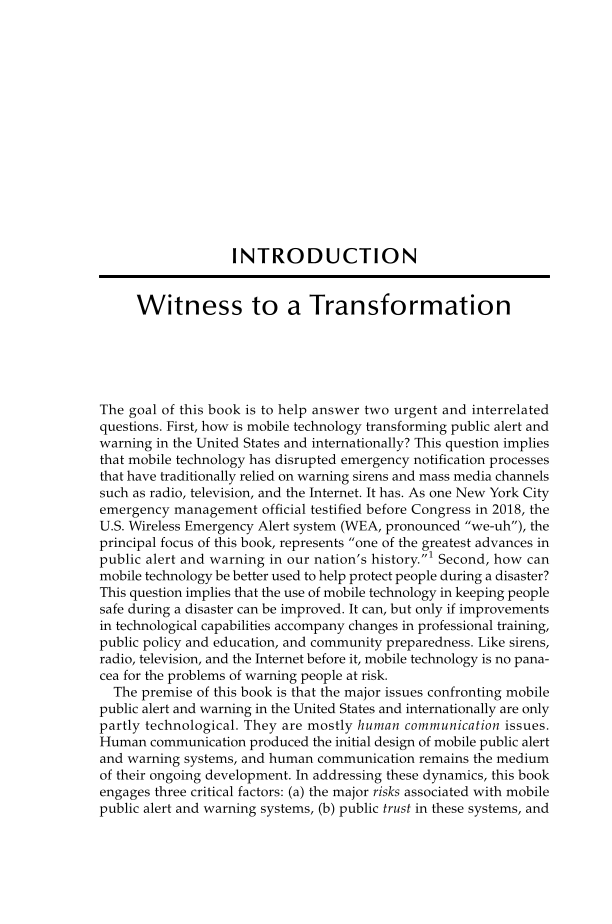INTRODUCTION Witness to a Transformation The goal of this book is to help answer two urgent and interrelated questions. First, how is mobile technology transforming public alert and warning in the United States and internationally? This question implies that mobile technology has disrupted emergency notification processes that have traditionally relied on warning sirens and mass media channels such as radio, television, and the Internet. It has. As one New York City emergency management official testified before Congress in 2018, the U.S. Wireless Emergency Alert system (WEA, pronounced “we-uh”), the principal focus of this book, represents “one of the greatest advances in public alert and warning in our nation’s history.”1 Second, how can mobile technology be better used to help protect people during a disaster? This question implies that the use of mobile technology in keeping people safe during a disaster can be improved. It can, but only if improvements in technological capabilities accompany changes in professional training, public policy and education, and community preparedness. Like sirens, radio, television, and the Internet before it, mobile technology is no pana- cea for the problems of warning people at risk. The premise of this book is that the major issues confronting mobile public alert and warning in the United States and internationally are only partly technological. They are mostly human communication issues. Human communication produced the initial design of mobile public alert and warning systems, and human communication remains the medium of their ongoing development. In addressing these dynamics, this book engages three critical factors: (a) the major risks associated with mobile public alert and warning systems, (b) public trust in these systems, and
Document Details My Account Print multiple pages
Print
You have printed 0 times in the last 24 hours.
Your print count will reset on at .
You may print 0 more time(s) before then.
You may print a maximum of 0 pages at a time.













































































































































































































































